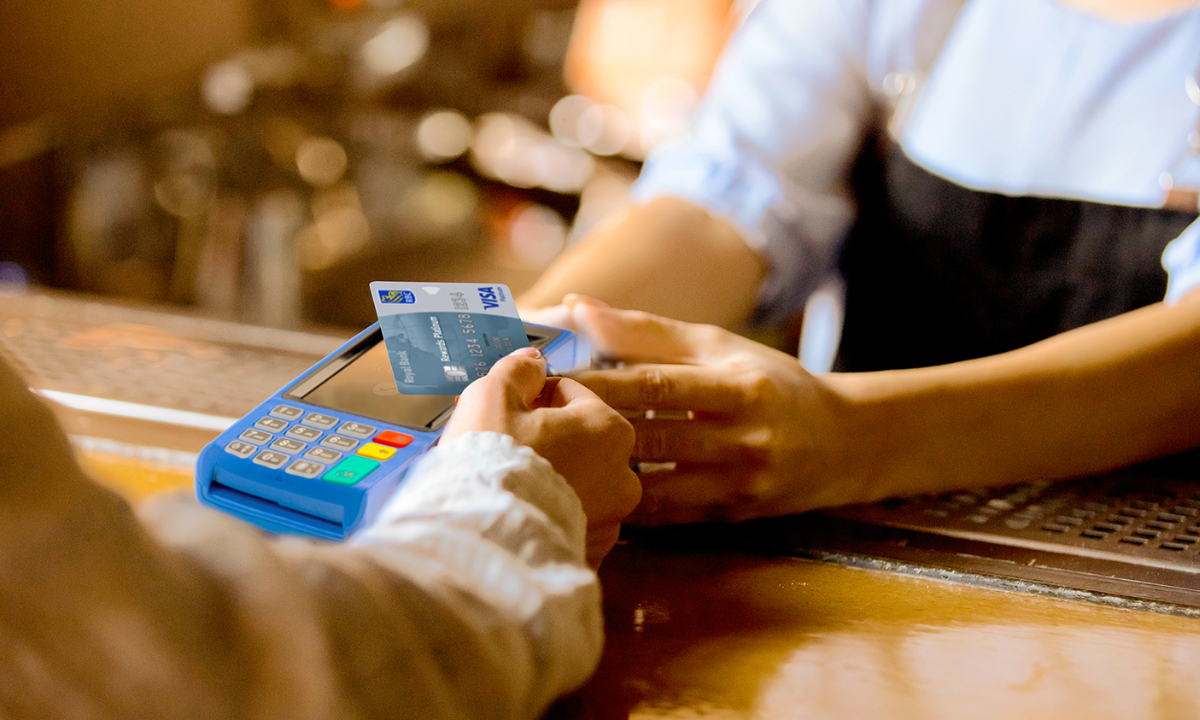What is Skimming?
Skimming occurs when fraudsters install specialized equipment (skimmers) at ATM machines and point-of-sale (POS) devices in order to copy credit or debit card information. Be mindful that skimming can occur with both in-store and delivery transactions as outlined below:
- Firstly, the ATM or POS device is tampered with to install a card skimming device which may include Bluetooth functionality that is able to copy and transmit card data as well as the PIN to a secondary receiver
- Secondly, the data is used to create a counterfeit card
- Lastly, fraudsters use the counterfeit card to complete unauthorized transactions from the cardholder’s account
Be Mindful and Stay Alert:
Keep a close eye on your card at all times when using an ATM or POS device and remain vigilant during the entire transaction.
At the ATM Machine:
When you approach an ATM, check for obvious signs of tampering at the top of the ATM, near the speakers, at the side of the screen, by the card reader, and on the keypad.
- Check for tape and/or sticky glue residue on any part of the ATM
- Take note of bulkiness on the card insert area or the PIN keypad
- Check if anything is hanging from the ATM or if something looks suspicious, such as different colours or materials, misaligned graphics or anything else that may be out of place
- Examine the card slot or keypad for loose-fitting attachments
If you observe any of these signs, do not use the ATM and immediately report your findings to the bank.
At the Point-of-Sale Device:
- If the initial transaction fails and you decide to pay with cash, verify with your bank that money was not debited from your first attempt
- Only confirm your transaction at a POS device once you have seen the value
- Pay attention to every detail of your transaction and how it is being processed
When Accepting Deliveries:
- If the first attempt of the transaction fails, the delivery representative may retrieve a second device and ask you to swipe your card again. While this can occur due to connectivity issues; we recommend keeping a close eye on your account and subsequent transactions. Report any anomalies to your bank as soon as possible.
- If possible, take note of the vehicle number of the delivery driver.
- Keep your receipts for a minimum of 2 weeks after the transaction.
Never:
- Allow a customer sales representative to leave with your card. Request a portable POS device or go to the cashier to pay.
- Disclose your PIN to anyone, write it down or store it on your phone. Avoid using obvious numbers such as your birthday, address or phone number that are easy to guess if your card is lost or stolen. Change your PIN often and if you think your PIN may have been compromised, change it immediately by visiting an RBC Branch.
Responsibility as Merchants
As a merchant, you and your employees are the first line of defense against skimming and other types of fraud. You pay an important role in protecting the payment ecosystem, your business and customers against fraudulent transactions. The following measures can greatly reduce the risk of fraud occurring by:-
- Restricting POS device access to authorized employees only.
- Ensuring employees are trained to recognize the signs of possible fraud and are provided with periodic reminders to stay alert to potential threats.
- Always being aware that fraudsters may attempt to join their business and/or approach employees to assist with these illegal activities.
- Always safeguarding the POS devices and exercising due diligence to immediately report any tampering or missing POS devices to the bank.
- Performing frequent visual inspections for signs of tampering especially in high-traffic areas and more frequently in locations with low foot-traffic or POS devices using an external PIN pad.
- Regularly keeping track of and reporting operational difficulties that may occur.
Reporting Suspicious Transactions
Online Banking makes everyday banking transactions faster and easier, providing real-time access to your accounts to easily track your spending. If you are not enrolled in Online Banking, pay close attention to your paper-based bank statements. If you ever notice any suspicious transactions, immediately report them to your bank.
Kimberly Inglis is a freelance writer from Trinidad and Tobago who also enjoys blogging and baking in her spare time.
This article is intended as general information only and is not to be relied upon as constituting legal, financial or other professional advice. A professional advisor should be consulted regarding your specific situation. Information presented is believed to be factual and up-to-date but we do not guarantee its accuracy and it should not be regarded as a complete analysis of the subjects discussed. All expressions of opinion reflect the judgment of the authors as of the date of publication and are subject to change. No endorsement of any third parties or their advice, opinions, information, products or services is expressly given or implied by Royal Bank of Canada or any of its affiliates.



















